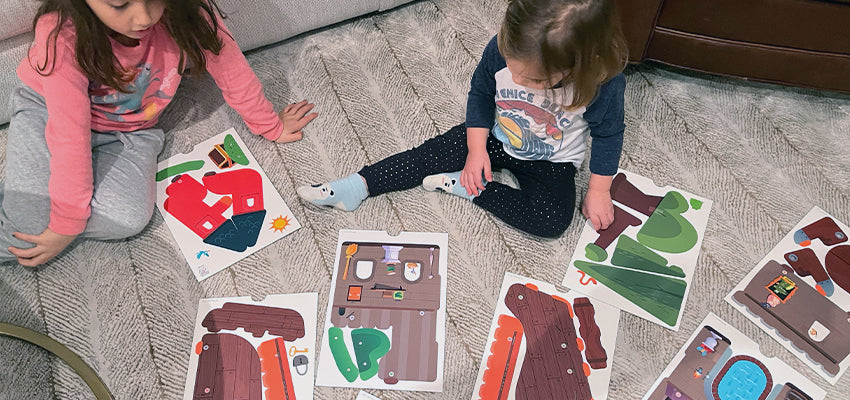
Exploring Sensory Toys for Autistic Children: A Look at Playper’s Curious Kingdom
Introduction: A Journey of Discovery and Connection
As I reflect on the journey of founding Playper, a sustainable toy company dedicated to sparking joy and creativity in children, I'm often struck by the profound connections and unexpected discoveries along the way. One of the most heartwarming of these discoveries has been our deepening relationship with the Autism community. The power of play, especially for children on the autism spectrum, has revealed itself in remarkable ways, reshaping our approach and philosophy towards toy creation. This April, during Autism Awareness Month, we revisit these insights and share compelling developments that can transform the play experiences for our extraordinary young ones.
Original Article by Andie Rich
In honor of Autism Awareness Month, we're privileged to share insights from Andie Rich, Director and Education Specialist at Thriving Minds Learning Center. Andie emphasizes the importance of specially designed toys that cater to the unique needs of children with autism.
Spectacular Minds Deserve Spectacular Toys: Children with autism are truly spectacular, possessing unique perspectives that shine brightly when matched with the right play experiences. Playper’s Curious Kingdom is crafted to captivate these incredible minds. Through multisensory engagement—tactile building, vivid colors, and interactive sounds—this toy kingdom opens up a world of possibilities, allowing children to explore and grow at their own pace.
Adapting to Sensory Sensitivities: Recognizing that some children may have sensitivities to light, sound, or touch, Curious Kingdom is designed to be versatile. Children can choose how they interact with the toy, ensuring that their playtime is comfortable and enjoyable, whether they use the accompanying app or not.
Fostering Independent and Social Play: The Curious Kingdom encourages various play modes—from solo imaginative play to interactive play with peers, supporting children as they navigate their social environments and develop valuable interpersonal skills.
Insights from Experts on Autistic Play
Recent discussions and articles offer fresh perspectives on how children with autism engage with the world through play:
- What Autistic Play Looks Like: Lisa Jo Rudy, a renowned autism advocate and journalist, describes how solitary and repetitive play, like lining up toys, is a natural and beneficial aspect of development for young children on the spectrum. It's a form of self-regulation and familiarity that provides comfort and joy. And interestingly highlights how at just 2 or 3 years old, most neurotypical children will start to play together.
- Engaging in Pretend Play: Big Heart Toys highlights the significance of pretend play in fostering abstract thinking and problem-solving skills. Despite the challenges, engaging children with autism in pretend play can be deeply rewarding, enhancing their ability to express emotions and interact socially.
- The Richness of Imagination in Autism: Jessica L. Penot challenges the misconception that autistic children lack imagination. She argues that their inner world is often vibrant and complex, offering them a unique way to cope with stress through imaginative play. Understanding and supporting these imaginative processes can provide deeper insights into the autistic experience.
Embracing the Magic of Play
As we continue to explore and learn from the autism community, it's clear that play is not just an activity; it's a vital part of how children discover themselves and connect with the world around them. At Playper, we are committed to designing toys that are not only fun but also enriching and supportive of all children, including those with autism. We invite you to join us in this journey, to learn more and to see the magic of play come to life.
